
The most potent antioxidant nature has to offer. Learn what Astaxanthin can do for your body. It is 6,000 times stronger that vitamin C, 800 times stronger than Green Tea Catechins, 550 times stronger that Vitamin E and the list goes on. We will discuss the many health supporting benefits involving serious eye conditions, immune system, blood pressure, cardiovascular health, anti-aging, dementia, joint and muscles, skin problems, anti-inflammatory and much more.
What is Astaxanthin?
Astaxanthin is the king of antioxidants. It is the red pigment found in algae with studies showing it offers significantly greater antioxidant protection than other carotenoids including beta carotene, lutein, lycopene, as well as alpha-tocopherol. There are actually 600 different carotenoids in plants and our food. Antioxidants protect our cells from damage, which opens a wide range of benefits and functions.
To better understand the function and benefit of antioxidants lets first take a brief look at their role play in the body. In addition to key antioxidants and their food sources will be followed by disease conditions and key applications of astaxanthin. 1
What is the relationship between Free Radicals, Oxidative Stress and Antioxidants?
What is a free radical?
Free radicals are described as single oxygen molecules with an uneven number of electrons.
Why are free radicals a problem?
Due to their uneven numbers, when they come in contact with other molecules, free radical’s damage molecules, ensuing a chain reaction.
What does this chain reaction do?
The result of this chain reaction is now called the process of ‘oxidation’.
Antioxidants: what do they help?
Antioxidants offer balance which then stops or prevents free radicals from damaging other molecules. The balancing effect is achieved by antioxidants supporting other molecules by providing single oxygen atoms an extra electron before they can damage other molecules.
How do carotenoids help this free radical problem?
What is a carotenoid?
There are over 600 different and distinctive carotenoids, with powerful antioxidant properties. A few include astaxanthin, lutein, beta carotene, lycopene and zeaxanthin.
Carotenoids cannot be produced by the human body, although they can be utilized when taken directly into the body or absorbed through the skin. Carotenoids are chemicals found in plants, being activated by photosynthesis, in this instance assisting the conversion of light into energy. They have powerful antioxidant properties that fight free radicals. 2
As with most things in life balance is key, however when we have too many free radicals coupled with far lesser amounts of antioxidants, free radicals can begin damaging protein, DNA and fatty tissue.
The oxidative stress resulting from the culmination of too many free radicals which then leads to multiple health risks such as cancer, heart disease, heightened aging process, dementia and skin problems and more.
Other Carotenoids and Food Sources
Alpha-carotene: high amounts in carrots, winter squash, tomatoes, Swiss chard, green beans and cilantro
Astaxanthin: is found naturally in red algae and other animal species in the marine food chain. Being that astaxanthin is a red pigment, it is markedly recognized in salmon flesh/roe and crustacean shells and other. Pluvialis algae provide the highest degree of astaxanthin, 3 percent of its total mass is solely astaxanthin. Pluvialis algae are the only source that has been approved by the FDA as a safe dietary source of astaxanthin. Another viable source is red yeast called phaffia rhodozyma, however the astaxanthin amount is much lower.
Foods are not a good source of astaxanthin
Even though wild sockeye salmon has the most astaxanthin compared to any other common food with approximately 26–38 mg/kg flesh is not considered a good source of astaxanthin. Farmed Atlantic salmon in comparison only has 6–8 mg/kg flesh. A person would need to eat 165 grams of salmon daily to obtain just 3.6 mg of astaxanthin. Overall low amounts compared to algae, supplemental algae would be first choice. 3
Beta-carotene: known for its ample supply in butternut squash, carrots, orange bell peppers, pumpkins, kale, peaches, apricots, mango, sweet potatoes, turnip greens, broccoli, and spinach
Canthaxanthin Group
Cryptoxanthin – found in papaya, apples, egg yolk and butter
Lutein – abundantly found in kale, spinach, beet, Swiss chard, red pepper, collard greens and mustard greens, endive and okra
Lycopene – generous amounts found in cooked red tomato products such as commonly sourced canned tomatoes, tomato sauce, tomato juice and garden cocktails, and fruits like guava and watermelon
Zeaxanthin – the most notable sources include kale, collard greens, spinach, turnip greens, mustard and beet greens, Swiss chard, broccoli and corn
Natural phenols
Polyphenol: Natural phenols are a class of molecules found in abundance in plants.
Flavonoids:
Flavonoids, a subset of polyphenol antioxidants, are present in many berries, as well as in coffee and tea.
Flavones:
Apigenin, Luteolin, Tangeritin
Flavonols:
Isorhamnetin, Kaempferol,
Myricetin – walnuts are a rich source
Proanthocyanidins, or condensed tannins
Quercetin and related, such as rutin
Vitamin E, Selenium, Manganese and Vitamin C – Quality Antioxidants
Vitamin E is a powerful antioxidant worth mentioning. Vitamin E is fat soluble and one of the four vitamins that is stored and not water soluble. Forms include tocotrienol and tocopherols. Alpha-tocopherol is the most common form in supplements. Good sources are wheat germ, nuts, seeds, sea buckthorn, whole grains, fish liver oil, green leafy vegetables, kiwifruit and avocados.
Vitamin E makes the trace mineral Selenium far more absorbable when taken together. For example, 200 mcg coupled with 400 IU vitamin E.
Selenium has potent antioxidant properties and offers immune support and is necessary for thyroid hormone conversion.
Manganese is another quality antioxidant. Manganese can be found in a wide range of foods, including whole grains, mussels, clams, oysters, nuts, soybeans, plus other legumes and rice, leafy vegetables, tea, coffee, and many spices, such as black pepper.
Vitamin C (ascorbic acid) Vitamin C is vital to our body’s immune healing processes, and is a powerful antihistamine in its own right. Its antioxidant properties help protect our cells against the effects of free radicals (described above)— free radicals are molecules that are naturally produced when our body breaks down food or is exposed to contaminants like tobacco smoke and radiation from the sun, X-rays or other sources. Food sources include citrus fruits such as oranges, sweet lime, etc., green peppers, broccoli, , black currants, strawberries, blueberries, sea buckthorn, raw cabbage, tomatoes and green leafy vegetables. 4.
Cell and Eye Defense
Foremost, antioxidants play an important role in our body by reducing the propagation and production of free radicals. 5,7 In combination with certain vitamins and minerals, antioxidants comprise a comprehensive defense system. Vitamin C and E are commonly known vitamins with chief antioxidant action that aide to, and work with other antioxidants like lutein and zeaxanthin. (Food sources listed below) On the whole, vitamin C is considered to be the most effective water-soluble antioxidant in the cellular fluid and plasma. While vitamin E acts in defense of cell membranes. 5, 6
Further antioxidant qualities, the trace mineral selenium offers additional support as a component of the antioxidant enzyme glutathione peroxidase (our body’s most abundant antioxidant). Selenium is known for its role in thyroid function, a required trace element for the conversion of inactive thyroid T4 hormones into the active form T 3. It also has a supportive role by reducing oxidative damage during the process of thyroid hormone production. 5,8
Eye Health
Two primary carotenoids supporting the retina and macula of the eye are lutein and zeaxanthin. Uniquely involved in supporting and maintaining eye health, lutein provides protection against light exposure and oxidative damage from metabolic processes. 9.
Astaxanthin or Zeaxanthin
Zeaxanthin has proven to be mainly beneficial for eye health, while astaxanthin plays a more all encompassing role for health benefits. Astaxanthin does provide protection to the eyes, in addition to brain health and function, heart health, immune response, skin care, joint protection and cancer treatment. 10
How much astaxanthin should you take for eye health?
Only naturally sourced Astaxanthin is recommended, it is twenty times more protective than a synthetic form. Look for supplemental sources that come from the microalgae Haematococcus pluvialis. For vision health, most benefit from between 4 and 12mg a day. 11
Cataracts
Great outcome, in an experimental model of steroid-induced cataract, astaxanthin application proficiently prevented lens opacification and significantly recovered glutathione levels, suggesting antioxidant activity as the main mechanism involved in cataract prevention. May 1, 2020. 12
Astaxanthin helps dry eyes
Researchers more recently discovered that astaxanthin can inhibit inflammation associated with numerous diseases. One way of application alleviated pro-inflammatory stress to the ocular surface epithelium in dry eye disease (DED), thereby improving analytical signs and symptoms. 13
Beta Carotene and Zinc
The provitamin beta carotene, is acclaimed in its supportive role of maintaining eyesight, as well as immune function, skin protection and membranes. Zinc is another key mineral contributing to immune and skin health and works alongside magnesium in a third of all body functions. 14
Heart Disease
Heart disease is the number one cause of death in North America over all other disease. One person dies every 36 seconds in the United States from cardiovascular disease. Feb 7, 2022
Similar in benefits to diabetic patients, astaxanthin impacted levels of cholesterol and blood pressure values. Over a twelve week study using supplemental astaxanthin, revealed reduced LDL cholesterol in overweight subjects while improving HDL levels. 15,16
Research also demonstrated improvement in the thickness and elasticity of the walls of the arteries. By strengthening arterial walls, helps regulate blood pressure and prevent hypertension induced heart failure. 17
In additional support of astaxanthin, researchers discovered after 2 weeks of patients taking astaxanthin, revealed improved blood clotting time and reduced blood oxidation. 18
Osteoarthritis – Astaxanthin show great promise
Very supportive and helpful research for osteoarthritis sufferers. 19 Astaxanthin has shown:
- help maintain the balance between new and deteriorating cartilage cells
- reduce inflammation in joints succumbed by arthritis
- stopped cartilage cells from deteriorating in any way in some patients
Dementia and Cognition Decline
Astaxanthin has shown to help people with early stage dementia and Alzheimer’s disease. Because oxidative stress promotes the progression of cognition impairment, supplementing with astaxanthin and/or other antioxidants will help protect against brain neurons and tissue damage. Research studies confirmed significant improvements in cognitive functions (ability to understand and complete complex tasks accurately and quickly), was concluded in a 2018 study performing a clinical trial determining the effects of astaxanthin. 20.
Diabetes – Benefits
In a clinical trial, subjects with type 2 diabetes experienced improved metabolism of sugar and lower blood pressure values. During this 2018 study, subjects increased their HDL, our good cholesterol.
Activate Longevity Gene
Science knows of our longevity gene ‘FOXO3’ which is among a few genes connected to human longevity. And by activating FOXO3, we may live longer. Apparently, studies show that only one in three humans have this gene activated in their body.
Good news, astaxanthin has demonstrated the ability to activate this gene and human clinical trials are still ongoing and showing great promise.
“All of us have the FOXO3 gene, which protects against aging in humans,” said Dr. Bradley Willcox, MD, Professor and Director of Research at the Department of Geriatric Medicine, JABSOM, and Principal Investigator of the National Institutes of Health-funded Kuakini Hawaii Lifespan and Healthspan Studies. “But about one in three persons carry a version of the FOXO3 gene that is associated with longevity. By activating the FOXO3 gene common in all humans, we can make it act like the “longevity” version. Through this research, we have shown that Astaxanthin “activates” the FOXO3 gene,” said Willcox.
“We found a nearly 90% increase in the activation of the FOXO3 “Longevity Gene” in the mice fed the higher dose of the Astaxanthin compound CDX-085,” added Dr. Richard Allsopp, PhD, Associate Professor, and researcher with the JABSOM Institute of Biogenesis Research.22
Immune System
Increases White Blood Cells
White blood cells are deployed as soon as pathogens are detected, part of our first line of defense. This is not a simple task, the bone marrow is stimulated to create a far greater production of white blood cells which requires energy. Energy is produced by neighboring mitochondria, however in the midst of this energy phase, mitochondria cells leak, referred to as Reactive Oxygen Species (ROS). At this point in time, these cells need protection, without which ROS will cause membrane damage, low energy output and tissue destruction, hindering the production of white blood cells.
Astaxanthin has the capacity to protect against ROS, being able to cross full membrane bilayers* creating the environment for optimal white blood cell production.
* Definition of bilayer: a film or membrane with two molecular layers a bilayer of phospholipid molecules.
Increases B Cells and T Cells
B and T immune cells perform a vital role in our body’s defense system. A clinical study demonstrated that astaxanthin significantly increased T and B cells after only 4 weeks. The participants involved young female students who consumed 2 to 8 mg astaxanthin orally.
Critical Viral Infections (SIRS)
Astaxanthin reduced inflammation during later stages of highly pathogenic viral infections, during which time, the body causes the immune system to react excessively which can advance to systemic inflammation response syndrome (SIRS). This is a life-threatening situation in the disease state, which can lead to organ failure, typically at the site of infection.
The powerful antioxidant action of natural astaxanthin hampered local inflammation and the development of SIRS, noted by the reduction of pro-inflammatory cytokines like TNF-a and IL-6. 23
Astaxanthin supports the immune system in a variety of ways, it modulates immune response, protects against cancer cell growth, reduces bacterial levels and proliferation, decreases oxidative stress and inflammation while protecting against UVA-induced oxidative stress to name a few.24
Our body’s can become overwhelmed in its fight against oxidative stress, then calling upon our natural defense mechanisms which benefit immensely from external antioxidant assistance. 25
References
1. Medically reviewed by Timothy J. Legg, PhD, PsyD — Written by Megan Dix, RN, BSN — Updated on September 29, 2018 Everything You Should Know About Oxidative Stress https://www.healthline.com/health/oxidative-stress
2. By Jessie Szalay published October 15, 2015. https://www.livescience.com/52487-carotenoids.html
3. Mar Drugs. 2014 Jan; 12(1): 128–152.Published online 2014 Jan 7. doi: 10.3390/md12010128.PMCID: PMC3917265.PMID: 24402174.Astaxanthin: Sources, Extraction, Stability, Biological Activities and Its Commercial Applications—A Review Ranga Rao Ambati,1,* Phang Siew Moi,1 Sarada Ravi,2 and Ravishankar Gokare Aswathanarayana3 https://www.ncbi.nlm.nih.gov/pmc/articles/PMC3917265/
4.Vitamin C – Mayo Clinichttps://www.mayoclinic.org › art-203639325. Zoidis, E, Seremelis, I, Kontopoulos, N, Danezis, GP. Antioxidants (Basel). 2018; 7(5). pii: E66.
6. Combs, GF. (2012). The Vitamins (4th ed.). USA: Elsevier.
7. Nutrients for Prevention of Macular Degeneration and Eye-Related Diseases. Antioxidants (Basel). 2019 Apr; 8(4): 85.Published online 2019 Apr 2. doi: 10.3390/antiox8040085.PMCID: PMC6523787.PMID: 30986936.Hock Eng Khoo,1,2 Hui Suan Ng,2 Wai-Sum Yap,3 Henri Ji Hang Goh,4 and Hip Seng Yim2,* https://www.ncbi.nlm.nih.gov/pmc/articles/PMC6523787/
8. Tinggi, U. Environ Health Prev Med. 2008; 13: 102-108.
9. Ma, L, Lin, XM. J Sci Food Agric. 2010; 90: 2-12.
10. https://www.dailygem.co/blogs/news/zeaxanthin-vs-astaxanthin-whats-the-difference
11. https://www.invision2020.com/astaxanthin-the-supernutrient-in-preventative-eye-care/
12. Clinical Applications of Astaxanthin in the Treatment of Ocular … Effect of astaxanthin on cataract formation induced by glucocorticoids in the chick embryo.Ishikawa S, Hashizume K, Nishigori H, Tezuka Y, Sanbe A, Kurosaka D. Curr Eye Res. 2015 May; 40(5):535-40. https://www.ncbi.nlm.nih.gov › articles › PMC7281326
13. https://www.reviewofoptometry.com/article/astaxanthin-improves-ded-signs-and-symptoms
14. Schwartz, JR, Marsh, RG, Draelos, ZD. Dermatol Surg. 2005; 31: 837-847.
15. Randomized Controlled Trial Plant Foods Hum Nutr. 2011 Nov;66(4):363-9. doi: 0.1007/s11130-011-0258-9.Positive effects of astaxanthin on lipid profiles and oxidative stress in overweight subjectsHye Duck Choi 1, Yeo Kyu Youn, Wan Gyoon Shin.Affiliations expand PMID: 21964877 DOI: 10.1007/s11130-011-0258-9 https://pubmed.ncbi.nlm.nih.gov/21964877/
16. Randomized Controlled Trial Atherosclerosis. 2010 Apr;209(2):520-3. doi: 10.1016/j.atherosclerosis.2009.10.012. Epub 2009 Oct 14.Administration of natural astaxanthin increases serum HDL-cholesterol and adiponectin in subjects with mild hyperlipidemia Hiroshi Yoshida 1, Hidekatsu Yanai, Kumie Ito, Yoshiharu Tomono, Takashi Koikeda, Hiroki Tsukahara, Norio Tada.Affiliations expand PMID: 19892350 DOI: 10.1016/j.atherosclerosis.2009.10.012 https://pubmed.ncbi.nlm.nih.gov/19892350/
17. Antihypertensive potential and mechanism of action of astaxanthin: III. Antioxidant and histopathological effects in spontaneously hypertensive rats. Ghazi Hussein 1, Hirozo Goto, Shinobu Oda, Ushio Sankawa, Kinzo Matsumoto, Hiroshi Watanabe.Affiliations expand PMID: 16595899 DOI: 10.1248/bpb.29.684 https://pubmed.ncbi.nlm.nih.gov/16595899/
18. Inhibition of low-density lipoprotein oxidation by astaxanthin.T Iwamoto 1, K Hosoda, R Hirano, H Kurata, A Matsumoto, W Miki, M Kamiyama, H Itakura, S Yamamoto, K Kondo.Affiliations expand PMID: 11521685 DOI: 10.5551/jat1994.7.216. https://pubmed.ncbi.nlm.nih.gov/11521685/
19. Research Paper Volume 11, Issue 22 pp 10513—10531.Astaxanthin protects against osteoarthritis via Nrf2: a guardian of cartilage homeostasis. https://www.aging-us.com/article/102474/text
20. Randomized Controlled Trial J Alzheimers Dis. 2018;62(4):1767-1775. doi: 10.3233/JAD-170969. Effects of Composite Supplement Containing Astaxanthin and Sesamin on Cognitive Functions in People with Mild Cognitive Impairment: A Randomized, Double-Blind, Placebo-Controlled Trial.Naoki Ito 1, Hitomi Saito 1, Shinobu Seki 1, Fumitaka Ueda 1, Takashi Asada 2. Affiliations expandPMID: 29614679 PMCID: PMC5900571 DOI: 10.3233/JAD-170969 https://pubmed.ncbi.nlm.nih.gov/29614679/
21. Randomized Controlled Trial Asia Pac J Clin Nutr. 2018;27(2):341-346. doi:10.6133/apjcn.052017.11.Astaxanthin improves glucose metabolism and reduces blood pressure in patients with type 2 diabetes mellitus.Nafiseh Sokri Mashhadi 1, Mehrnoosh Zakerkish 2, Javad Mohammadiasl 3, Mehdi Zarei 4, Majid Mohammadshahi 5, Mohammad Hossein Haghighizadeh 6.Affiliations expand PMID: 29384321 DOI: 10.6133/apjcn.052017.11 https://pubmed.ncbi.nlm.nih.gov/29384321/
22. Science Newsfrom research organizations.Astaxanthin compound found to switch on the FOX03 ‘Longevity Gene’ in mice.Date:March 28, 2017.Source: University of Hawaii Cancer Center https://www.sciencedaily.com/releases/2017/03/170328092428.htm
23. https://www.lusingredients.com/products/astaxanthin/the-three-ways-astaxanthin-helps-boost-your-immune-system/
24. https://www.ncbi.nlm.nih.gov › articles › PMC2845588
25. Kelly, E, Vyas, P, Weber, JT. Molecules. 2017; 23(1). pii: E26.
Copyright © 2022 – All Rights Reserved – Michelle Honda Ph.D.
Announcement
Look for my latest book “Reverse Depression Naturally” (Spring 2020) “Reverse Inflammation Naturally” (May 31, 2017) “Reverse Thyroid Diseases Naturally” (June 2018) “Reverse Alzheimers/Dementia Naturally” (Nov.2018) “Reverse Heart Disease Naturally” (Jan.31, 2017) and “Reverse Gut Diseases Naturally Nov. 2016
Where to Purchase:
Reverse Gut Diseases Naturally Nov. 2016
Reverse Heart Disease Naturally Jan. 2017
Reverse Inflammation Naturally May 2017
Reverse Thyroid Disease Naturally June 28/2018
Reverse Alzheimers Disease Naturally Nov. 2018
Reverse Depression Naturally Spring 2020
Hatherleigh Press Page Buy Book RGDN
Local Book Stores in US and Canada
Disclaimer
While close attention was given to the accuracy of information in this article, the author accepts neither responsibility nor liability to any person with respect to injury, damage, loss or any circumstances involving alleged causes directly or indirectly related to the information in this article. The sole purpose is to educate and broaden ones awareness. This information is not meant to replace medical advice or services provided by a health care professional.





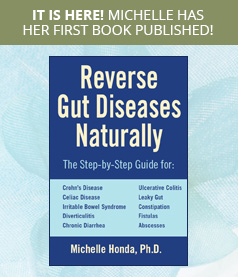

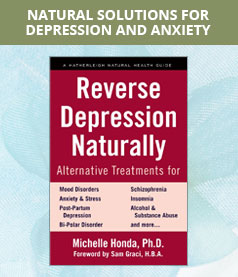
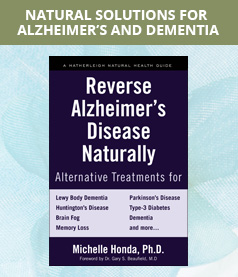
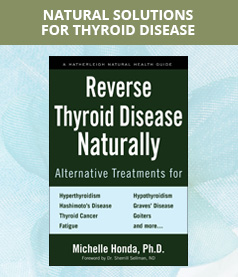

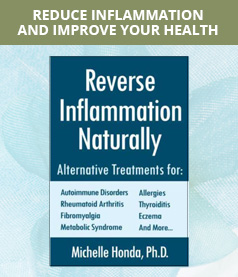
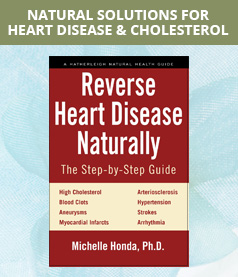
Follow Us!